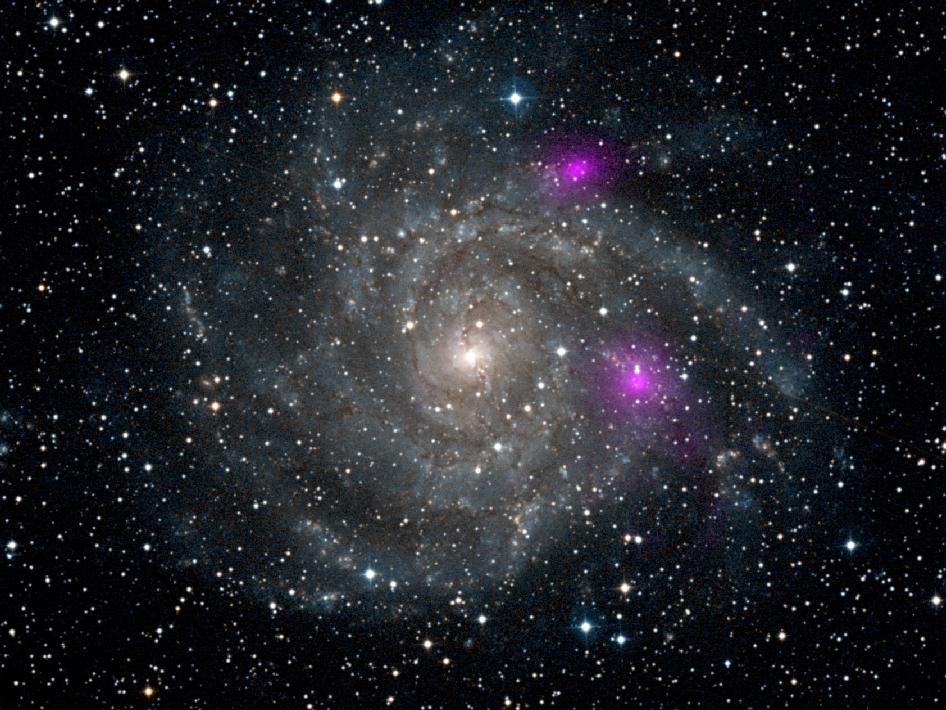Filtered By: Scitech
SciTech
NASA finds two black holes in nearby galaxy
By Shaira F. Panela, GMA News
NASA's high-energy X-ray telescope has spied two black holes in a galaxy just seven million light years away.
NASA's Nuclear Spectroscopic Telescope Array (NuSTAR), launched in June 2012, caught a glimpse of two black holes in the arms of a spiral galaxy named Caldwell 5 or IC342.
Caldwell 5 has been one of the targets of the telescope in its hunt for black holes. on Jan. 7, NASA came out with images of the galaxy featuring these black holes, artifically colored magenta in the photo below: 

Source: NASA
"These new images showcase why NuSTAR is giving us an unprecedented look at the cosmos," Lou Kaluzienski, NuSTAR program scientist at NASA office in Washington, was quoted as saying in Science Daily.
"With NuSTAR's greater sensitivity and imaging capability, we're getting a wealth of new information on a wide array of cosmic phenomena in the high-energy X-ray portion of the electromagnetic spectrum," Kaluzienski added.
NuSTAR is the first high-energy X-ray orbiting telescope. Objects previously seen in previous black hole-hunting missions are better viewed in NuSTAR.
The world's first high-energy X-ray orbiting telescope, NuSTAR's two-year mission overlaps with other X-ray spectrum observatories like NASA's Chandra and the European Space Agency's XMM-Newton satellite. But NuSTAR records higher energies, focusing on photos between 6 and 79 kiloelectronvolts, said Harrison.
"Before NuSTAR, high-energy X-ray pictures of this galaxy and the two black holes would be so fuzzy that everything would appear as one pixel," NuSTAR principal investigator at California Institute of Technology Fiona Harrison was quoted in Science Daily.
Science Daily also reported that astronomers have yet to find out how these black holes shine so brightly.
"The objects appear about 10 times brighter than typical stellar-mass black holes, similar to those found throughout the Milky Way galaxy. But they aren't believed to be supermassive black holes because they are not located at their galaxy's center," Discovery News reported.
According to Science Daily, astronomers speculate that the black holes seen at Caldwell 5, called "ultraluminous X-ray sources", could be intermediate-mass black holes a few thousand times the mass of our Sun.
"High-energy X-rays hold a key to unlocking the mystery surrounding these objects," Harrison was quoted in Science Daily.
"Whether they are massive black holes, or there is new physics in how they feed, the answer is going to be fascinating," she added.
Meanwhile, on the Nature Blog, University of Maryland's Cole Miller said that "it will be difficult to identify the bodies as intermediate-mass black holes without information on the orbits of the objects, which would allow astronomers to weigh them." — TJD, GMA News
More Videos
Most Popular



